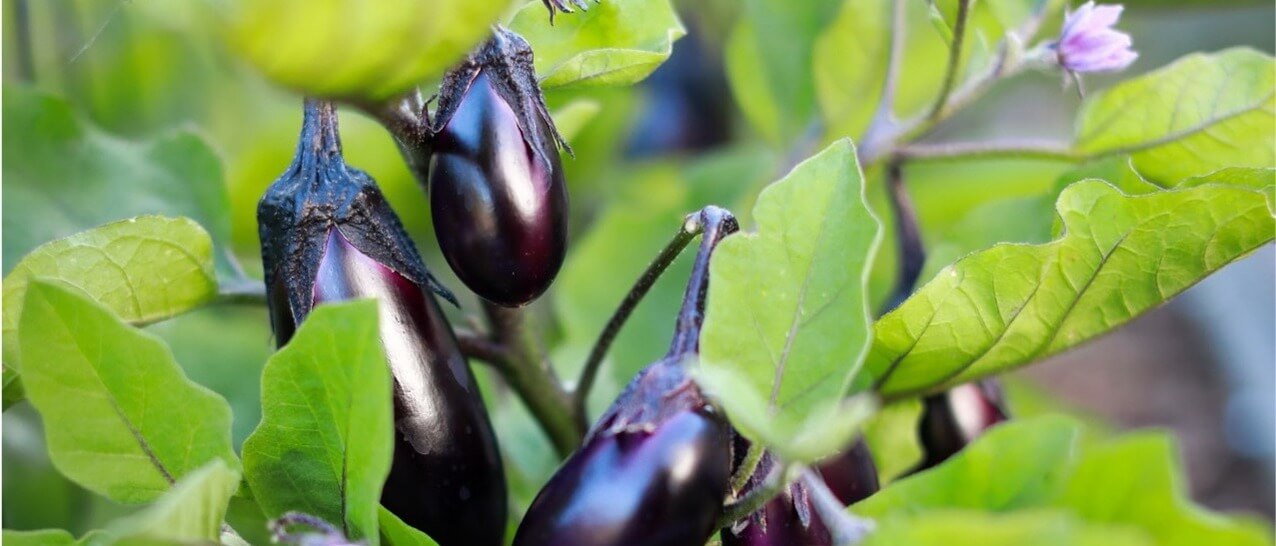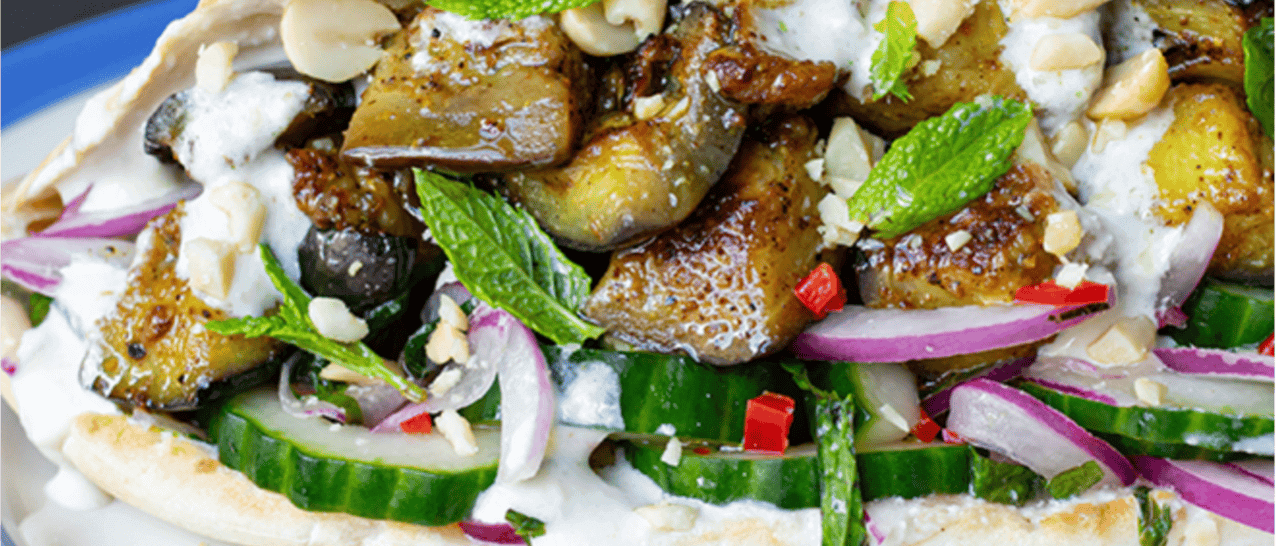



Key information
Colour: Deep purple or white – some rarer varieties can also be green or yellow
In season: July to October
Power to perform: Aubergines contain plenty of fibre, which keeps your digestive system healthy. Fibre helps you to digest food and absorb key nutrients, fuelling your body for an active lifestyle.
Grow me: Aubergines can be grown in the UK but, as they need quite a bit of warmth and sunshine, they are usually kept in greenhouses. They are best planted from February to March and become ready to pick between July and October.
Did you know?

Ideas garden
Remember to ask an adult's permission before experimenting with any aubergine ideas!
If you’re a fan of finger foods, like salmon and cream cheese rolls or pigs in blankets (sausages wrapped in bacon), why don’t you get rolling with aubergine?
First, cut the aubergine into long, thin slices and place them on a baking sheet – adding a brush of oil and a sprinkle of salt – before baking for about 15 minutes.
Once baked, you can roll and stuff your aubergine slices with any filling you like! Cream cheese with small bits of bacon, or soft goats' cheese with walnuts and honey are particularly tasty, but this is a great dish to start experimenting.
(Remember to ask an adult to upload an image and share your story with the Get Set to Eat Fresh community if you find any other great combinations!)
Go further: Finger foods are perfect for parties. Imagine you are planning a celebration for your family and friends: it could be a win for your local sports team, celebrating an achievement at school or a cultural festival. What light bites are on the menu?
Remember to include healthy foods and think about how you could reduce food waste e.g. adapting a single ingredient for multiple recipes.

An aubergine’s spongy flesh is great for soaking up flavour to make a filling and tasty dish, but it can also soak up a lot of oil when fried.
If you want to stop your aubergine from sponging up more oil than is necessary, you can use a method called “degorging” – a cooking technique far less scary than the name suggests! All you need to do is chop up your aubergine as normal, then sprinkle a generous amount of salt on the top (or place the pieces in salted water) and leave it to stand. After half an hour, return to your aubergine and rinse off the salt and juices. Hey presto! Your aubergine is degorged and ready to cook. Your degorged aubergine will soak up less oil when frying and will sometimes also taste sweeter!
Now that you’re ready to use your aubergine, try this lip-smacking spicy aubergine pitta with peanut dressing. Looking for a tasty meal without the washing-up? This one-dish aubergine and mascarpone traybake is the one!
